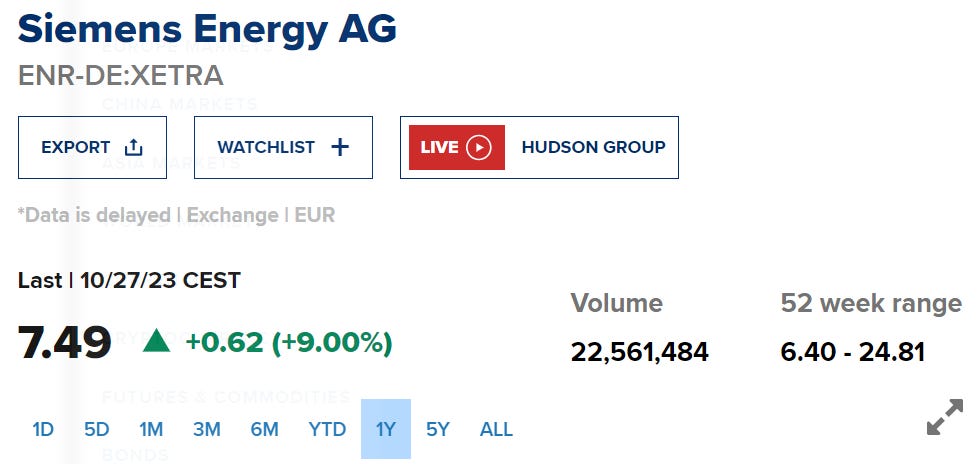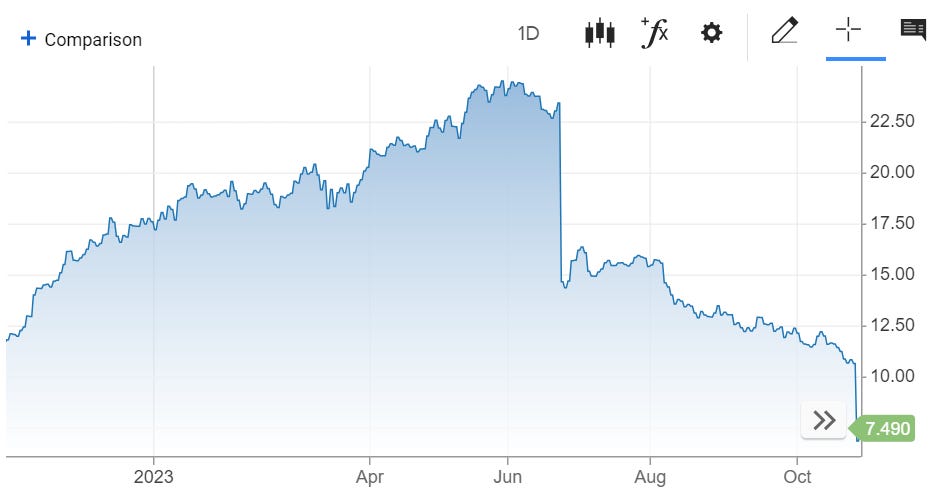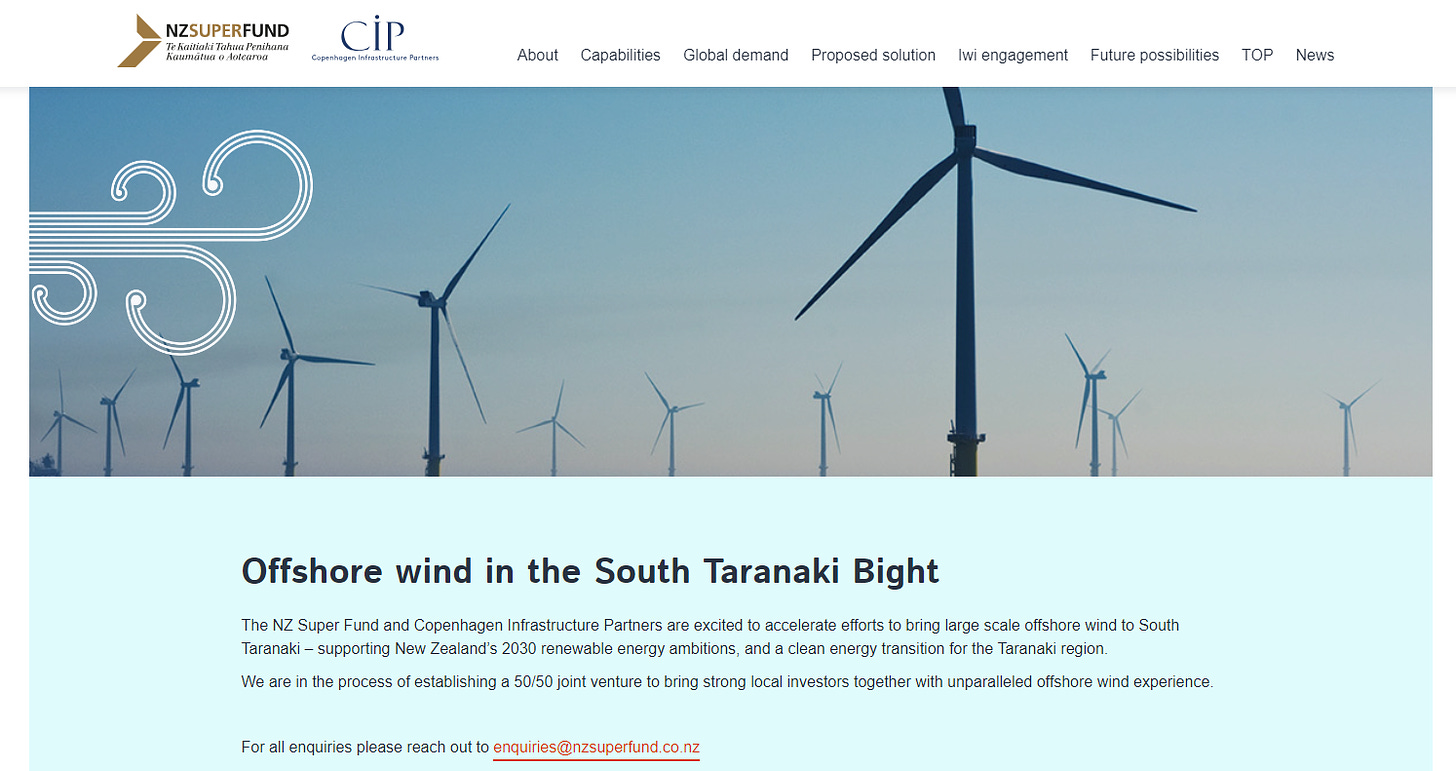NZ pension gone with the wind?
Offshore wind is a bad bet for the NZ Super Fund, as all the big industry players have another week from hell.
The last week has been another tough one for the offshore wind industry. German based Siemens Ganessa, one of the big European offshore wind players, saw a 35% drop in their share price on Thursday. The price drop come on the back of news that they are under significant financial distress and seeking guarantees from the German Government. This is the second hit the company has taken this year after earlier scrapping its profit forecast citing "substantial increase in failure rates of wind turbine components". In June the company was trading a smidge under €25, and this week hit a record low of €6.4.
Other big players aren’t fairing much better, with GE Wind forecasting $1 billion in losses this year and forecasting the same again for next year Bloomberg.
Orsted’s share price has also collapsed by nearly 50% since a June high of 673 and currently trading at 343 today ORSTEAD.CO.
In China, top turbine maker Xinjiang Goldwind Science & Technology Co. said on Friday that third-quarter profit tumbled 98%.
Norwegian energy giant Equinor ASA took a US$300 million impairment on US offshore wind projects.
The key factors at play here are:
ESG investing coming off the boil.
Corporates and managed fund have been pumping funds into “green” energy and other stocks that will improve their ESG (Environmental, Social and Governance) score. The problem is that ESG investment is based on ideology and is more often than not at odds with reality. As a result, these investments are not performing, and investment is subsequently drying up.
Commodity prices.
The iron law of energy density states that the lower the energy density the higher the resource intensity. Wind is low energy density and wind farms required massive amounts of material to construct. Steel, concrete, coper, composites, all in vast quantities. All of these resources are being affected by the inflationary cycle with wind farm construction costs rising more than 40% on average.
Interest rates.
One of the major costs for wind farm developers is finance. The cost to construct an offshore wind farm in the UK sector at the start of this year was around €3.5 million per megawatt. Hence a 1GW offshore wind development requires a capital investment of more than €3.5 billion. A shift in interest rates of 1-2% has a huge impact on the rate of return.
Reliability issues.
Siemens has what appears to be serious issues with blade flexion causing ripples in the blades and bearing failures.
Physics
The wind is fickle. Intermittent, weather dependent energy is expensive and creates significant grid issues with backup or some form of storage needed to meet demand. The power price required for wind farms to make a return on investment is too high and as such becoming politically unpalatable even for the most fanatical governments.
Enter the NZ Super fund.
The New Zealand super fund is a managed fund designed to provide New Zealanders with a universal pension in retirement.
The fund has recently announced that they are partnering with Copehagen Infrastructure Partners which is another managed fund to investigate building a 1GW wind farm near the Kupe gas field, off the coast of South Taranaki.
For the sake of everyone’s retirement ambitions, I hope these investigations come to the conclusion that wind farms are all promise and no profit.
To build a 1 GW wind farm even in partnership could require committing up to 10% of the fund to a single project. A risky proposition.
Imagine having the pension fund losing money hand over fist and at the same time having to pay two or three times as much for your electricity.
Thermodynamics is a ruthless referee.








